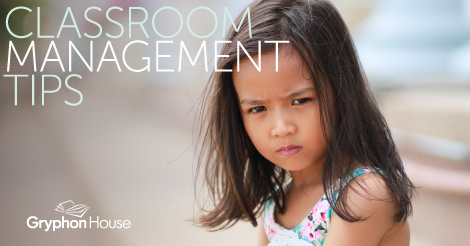No matter how smoothly your preschool classroom may run, there are always times when even the most well behaved students have trouble staying focused. Off-task students may not necessarily be “problem students,” but if their behavior is left unchecked, and they’re allowed to remain unfocused and off-task, their behavior might become disruptive and distract other students. Being prepared with a classroom management plan is a key step teachers can take in handling and preventing problem behavior in their classroom.
Dr. William DeMeo’s When Nothing Else Works, is full of creative classroom management strategies and techniques to “address and adjust problematic behavior in the classroom.” Classroom behavior management doesn’t have to be difficult, and strategies to promote focus are easier than you think to integrate into your classroom. However, it is important to remember that the classroom management strategies you use should be developmentally appropriate for your students. For example, younger children cannot and should not be expected to sustain focused attention on an activity for longer than they are capable. Try to avoid setting expectations for students they may not be able to reach due to their age and level of development.
Here are a few classroom management strategies, from When Nothing Else Works, for more focused learners that will have your students engaged and actively participating in no time!
Biological Factors of Attention
From a biological point of view, attention has two purposes: to promote survival and to extend pleasurable states. The brain is always paying attention to something; survival depends upon it. Children can be attentive in an educational environment when the learning is relevant, engaging, and chosen by the learner. Attention can be external or internal, focused or diffused, vigilant, or relaxed:
- External Attention: The child is drawn to novel objects or materials that she has not seen the classroom on previous occasions.
- Internal Attention: The child makes a conscious decision to be attentive to auditory or visual simulation.
- Focused Attention: The child concentrates on one specific dimension of the stimuli, such as a car that she moves back and forth on the floor.
- Diffuse attention: The child focuses on the car and thinks of and for it. Diffuse attention is inclusive and considered to be three-dimensional, giving equal attention to all internal and external stimuli simultaneously as well as the space, silence, and timelessness in which they can occur.
- Vigilance (also referred to as sustained attention): The child remains alert to stimulus events.
- Relaxed Attention: The child reduces the amount of attention she gives to something.
Children can sustain focused attention for short periods, but it is not developmentally appropriate to expect them to focus for long periods.
Why Young Children Need Processing Time
In the classroom there are three reasons why constant attention is counterproductive.
- Much of what we learn cannot be processed consciously; it happens too fast. We need time to process.
- To create new meaning, we need internal time. Meaning is always generated from within, not without.
- After each new learning experience, we need time for the learning to “imprint.”
Teachers can encourage personal processing time after children learn new material, so the children have an opportunity to assimilate their new knowledge.
Discussing the new learning in small groups helps children assimilate new information into memory.
Author(s)William DeMeo
Anna Wilmoth
Marketer. Publisher. Reporter. Educator. Mother. Runner. Explorer. Anna served as director of marketing for Gryphon House from Oct 2014 - May 2017.

